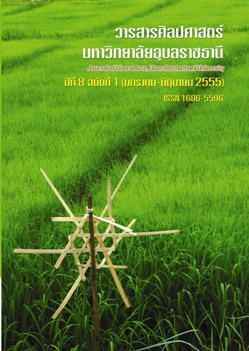การบริหารจัดการเมืองในรัชสมัยพระบาท สมเด็จพระจุลจอมเกล้าเจ้าอยู่หัว
Main Article Content
บทคัดย่อ
การวิจัยครั้งนี้มีวัตถุประสงค์เพื่อศึกษา การบริหารจัดการมณฑลเทศาภิบาลในรัชสมัยพระบาท สมเด็จพระจุลจอมเกล้าเจ้าอยู่หัวเป็นการวิจัยเชิงคุณภาพ (Qualitative research) โดยการใช้แนวการศึกษาเชิงประวัติศาสตร์(Historical Approach) และเชิงการบริหารจัดการ (Management Approach)ผลการวิจัยพบว่า สมเด็จฯ กรมพระยาดำรงราชานุภาพ ทรงได้รับพระบรมราชโองการจากพระบาทสมเด็จพระจุลจอมเกล้าเจ้าอยู่หัวให้ดำรงตำ แหน่งเสนาบดีกระทรวงมหาดไทยพระองค์แรกทรงนำทฤษฎีระบบราชการ(Bureaucracy) มาใช้รวมทั้งมี การวางแผน (Planning) ใช้เวลาถึง ๖ เดือนเพื่อศึกษาดูงานของกระทรวงมหาดไทยเพื่อวางแผนในการแบ่งมณฑลโดยใช้แม่น้ำเป็นเส้นแบ่ง หลังจากนั้นมี การจัดตั้งองค์การ(Organizing) มณฑล เมืองอำเภอและตำบลหมู่บ้านเพื่อทำ การจัดคนเข้าทำงาน (Staffing) ระดับมณฑล (ข้าหลวงเทศาภิบาล) ระดับเมืองยกเลิกระบบ “กิน เมือง” เปลี่ยนจาก “เจ้าเมือง” มาเป็น “ผู้ว่าราชการเมือง” โดยลดจากเจ้ามาเป็นข้าราชการในพระบาทสมเด็จพระเจ้าอยู่หัวและรับเงินเดือนจากรัฐบาลมี การอำนวยการ (Directing)ด้วยการจัดให้มีบ้านพัก ข้าราชการและศาลากลางสำหรับทำงานในเมืองนั้นๆ การประสานงาน (Co-Coordinating) ทั้งในกระทรวงนอกกระทรวงโดยช่วยเก็บภาษีอากรที่คั่งค้างแทนกระทรวงพระคลังมหาสมบัติ การรายงาน (Reporting)ในการประชุมเทศาภิบาลประจำ ปีจะมีรายงานทั้งด้วยวาจาและเป็นลายลักษณ์อักษร การงบประมาณ (Budgeting) มีการจัดทำงบประมาณของกระทรวงมหาดไทยเป็นครั้งแรก การตรวจราชการ (Inspection) เพื่อติดตามและประเมินผลงานทางด้านการบริหารจัดการ ท้ายที่สุดเพื่อให้เกิดความเข้าใจกฎหมายและระเบียบกฎเกณฑ์ต่างๆ อย่างถูกต้องตรงกันของบรรดาผู้บริหารกระทรวงมหาดไทยกำหนดให้มี การประชุม (Meeting) ทุกเช้าก่อนทำ งานและให้มีการประชุมในระดับอำ เภอ “เมือง”มณฑลและประชุมเทศาภิบาลอย่างสม่ำเสมอเป็นประจำทุกปี
The Muang Administrative Management in the Reign of King Chulalongkorn
The purpose of this research was to study the administrative management of The Etsapipal Contries during the Reign of King Chulalongkorn. It is a qualitative research with historical approach and research in management. The research reveals that Prince Damrong Rajanupab was appointed as the first minister of the Ministry of Interior. He laid down the management system according to the bureaucracy theory, there were planning, spending 6 months to study the work of Ministry of Interior, having plan to divide geographic area using the rivers as the diving lines. Afterward, set up organization such as District, Town, Tumbon, Amphoe and Village in order to recruit staff at district and township level, revoke the “Kin Muang” system, changing “The Chao Muang” to “the lieutenant governor” of a circle, transforming from royal relatives to administrative officials under the King and receiving salary from the government. For directing, the officials residential were set up together with the central office for provincial administration and issuing of law to specify the authority and responsibility of officials in all level, furthermore, the coordination between ministries leading to the collection of pending tax from previous administrative arrangement “Ministry of Finance”. It is the duty of “Superintendent Commissioner” to report to Ministry of Interior in the annual meeting verbally and in writing. Together with the capability of the King in budgeting, the Ministry of Interior received the most budget of alls, in addition, the astonishing activity of Prince Damrong Rajanupab was the inspection to monitoring and evaluating the management of Ministry of Interior for the final result in more understanding in rules and regulations among officials and management of Ministry of Interior, the meeting was held every morning before working starting of the day and to have annual meeting at provincial, districts and sub-districts, too.

